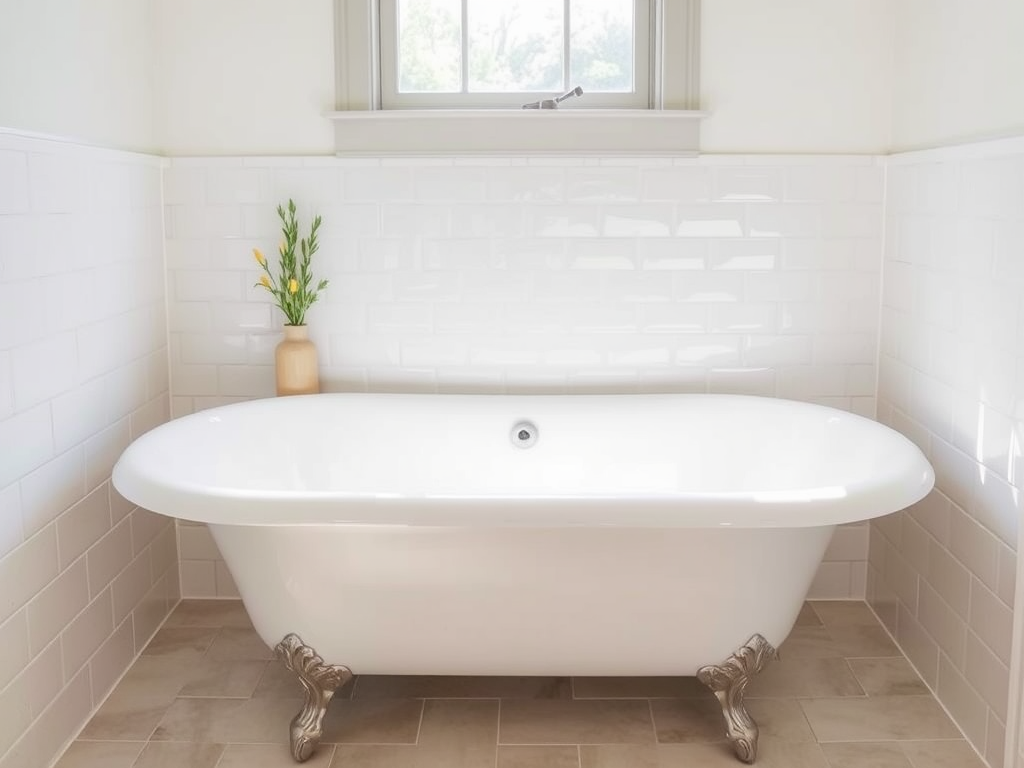When it comes to home improvement, few updates can add as much value and aesthetic appeal as a beautifully refinished bathtub. Tub reglazing—often known as refinishing or resurfacing—is a practical approach to refresh your bathroom without the significant financial burden of a full remodel. Many homeowners are turning to this simple yet effective solution to bring their tired bathtubs back to life. In doing so, they not only enhance the visual appeal of their spaces but also extend the life of existing fixtures. With that in mind, understanding the reglazing process, as well as its benefits and safety factors, becomes essential. Let’s dive into the most frequently asked questions regarding tub reglazing and uncover the truths behind this home improvement gem.
What is Tub Reglazing?

Tub reglazing is a transformative process that revitalizes your bathtub by applying a new coating to its surface. This refined finish can take an outdated or damaged tub to a level of shine and smoothness that rivals a brand-new fixture. The procedure typically involves several steps, including meticulous cleaning, surface repair, and the application of specialized coatings. Homeowners must consider that although it may seem like a straightforward task, the skill and expertise of professionals often yield the best results. This is because they ensure the new surface adheres correctly and lasts as long as possible. Getting a better understanding of the process can help prepare you for what to expect when considering reglazing as a viable option.
Why Should You Consider Reglazing Your Tub?

Choosing to reglaze your tub over a full replacement has many compelling benefits, making it an attractive option for savvy homeowners. First and foremost, one significant reason to reglaze is cost. Not only is reglazing often less expensive than purchasing a new tub, but it also saves on the additional costs associated with installation. Secondly, the time commitment for reglazing is minimal; the process usually takes just a few hours, allowing homeowners to return to normal routines much sooner than a full remodel would allow. Furthermore, reglazing represents an environmentally friendly choice by maximizing the life of existing fixtures and keeping them out of landfills. Last but not least, reglazing can significantly enhance the aesthetic appeal of your bathroom, making a dramatic difference in your space’s overall look and feel.
What Are the Steps Involved in Tub Reglazing?
The tub reglazing process involves several key steps that, when performed correctly, lead to a durable and polished finish. Below is a summary of the main stages involved in the reglazing procedure:
- Cleaning: The initial step is a thorough cleaning of the tub to eliminate soap scum, mold, and any existing finishes.
- Repairing: Any cracks, chips, or scratches must be repaired to create a smooth surface for reglazing.
- Sanding: The tub surface is sanded down to improve adhesion for the new glaze.
- Applying Primer: A specialized primer is then applied to set the stage for the new topcoat.
- Applying the Topcoat: The final coat, often made from epoxy or urethane, is carefully applied.
- Curing: Finally, the tub is allowed to cure for a specific period before being used.
| Step | Description |
|---|---|
| Cleaning | Elimination of grime and soap scum. |
| Repairing | Fixing any surface defects. |
| Sanding | Preparing the surface for a new finish. |
| Applying Primer | Enhancing adhesion for the glaze. |
| Applying Topcoat | The final glaze application. |
| Curing | Allowing time for the finish to set properly. |
How Long Does Reglazing Last?
Once you’ve decided to reglaze your tub, you may be wondering how long this new finish is expected to last. On average, with proper care and maintenance, a reglazed tub can last between 10 to 15 years. However, longevity largely depends on the conditions under which the tub is used, how well it’s maintained, and whether it’s regularly cleaned with appropriate products. For instance, avoiding abrasive cleaners and harsh chemicals can greatly enhance the lifespan of the glaze. Homeowners should also be mindful of maintaining a consistent cleaning routine to prevent build-up that could harm the finish. In conclusion, while reglazing is a long-lasting solution, homeowners play a critical role in ensuring its sustainability through mindful use and care.
Is Reglazing Safe for My Health?
Safety is a crucial aspect of any home improvement project, and tub reglazing is no exception. Many homeowners worry about potential health concerns related to the fumes or chemicals involved in the process. When performed by professionals, tub reglazing is generally safe. Skilled workers utilize high-quality materials and ensure proper ventilation throughout the job to minimize any adverse effects. It’s always wise to read the manufacturer’s safety guidelines in advance and maintain a well-ventilated area. In addition, personal protective equipment, such as masks and gloves, should be worn during the process. Ultimately, safety should never be overlooked, and choosing qualified professionals is always the best course of action.
Can All Tubs be Reglazed?
Not all tubs are created equal, and while many can be reglazed, there are exceptions. The majority of bathtubs made from materials such as porcelain, acrylic, and fiberglass can undergo reglazing successfully. However, if you have a unique material or if your tub shows extensive damage, it’s advisable to seek professional consultation. This ensures you can receive tailored advice for your specific situation. Additionally, some specialty or old-style tubs may require more complex repairs than standard reglazing, and understanding these limitations can save you time and money in the long run. Ultimately, consulting with a professional will clarify what’s possible for your tub.
Conclusion
Reglazing a tub can be an ingenious way to rejuvenate your bathroom’s appearance without undergoing a major renovation. With its myriad of benefits, including cost-effectiveness and minimal interruption to your life, tub reglazing stands out as a highly appealing option for homeowners. Furthermore, understanding the procedure, timeline, and maintenance involved helps you to make an informed decision that suits your lifestyle and budget. As you weigh the options, remember the substantial investment in time and resources is often well worth the results. If you’re ready to transform your bathroom, reglazing could indeed be the perfect choice for you.
FAQ
- How much does tub reglazing cost? The cost typically ranges from $300 to $600, depending on the condition of the tub and the area of service.
- How long does the reglazing process take? Reglazing a tub generally takes about 4 to 6 hours, with an additional 24 hours required for curing.
- Can I use my tub immediately after reglazing? It is advised to wait at least 24 hours before using the tub to ensure the glaze has properly cured.
- Is there any maintenance required after reglazing? Yes, to maintain the finish, avoid using abrasive cleaners and consider gentle cleaning solutions.
- What is the difference between reglazing and resurfacing? Both terms are often used interchangeably, but resurfacing may refer to different types of restoration processes depending on the material and condition of the tub.



